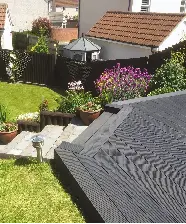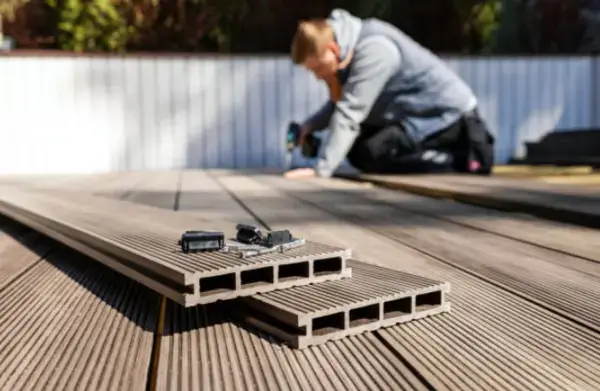Wooden decking is a great substitute for composite decking. Modern homeowners have learned that composite dec-king may produce places that are both aesthetically beautiful and useful. However, the composite dec-king industry and technology are constantly evolving. This has resulted in a wide variety of composite decking options available to customers today. This means that when choosing composite decking., homeowners could feel overwhelmed.
We’ll be concentrating on HOW to choose composite decking in this post, although a lot of the information also applies to PVC and plastic decks. The most challenging aspect of the selection process is figuring out which composite decking model, brand, and quality is best.

How does composite decking work?
Composite decking is a composite material made of wood and plastic fragments. The composite decking board is composed of the two materials combined. This makes the deck visually more attractive than traditional wood and requires less maintenance.
Composite decking material generally has a longer lifespan. It does not splinter or split as readily as wood does as a result. Insects that cause damage are unable to harm composite decks, and pests cannot harm the composite material. Composite deck boards have exceptional durability and performance, enabling them to survive for at least thirty years.
Various kinds of composite decking
Recycled wood and plastic are combined to create composite decking, giving you the finest of both worlds. Outdoor decking projects are ideal for plastic because of its strength and durability and wood’s timeless appeal. The best kind of composite deck for your project may be determined in part by your budget.
strong composite decking: The simplest kind of composite dec-king to produce is solid composite decking. This kind of decking resembles solid wood more and is strong and long-lasting. Although solid composite dec-king is a good option, there are certain disadvantages to it. It weighs more and is more costly. Furthermore, solid composite deck planks are more likely to warp and shrink.
Hollow composite dec-king: Hollow composite decking weighs less than solid composite dec-king. Hollow composite dec-king provides good durability, is less expensive, and is simpler to install. Because of its hollow inside, hollow decking is ideal for running cables and wires since it is less vulnerable to dampness and harsh weather. It can sustain impact damage, nevertheless, and lacks the typical wood’s timeless, organic appearance.
Uncapped vs capped composites: Since they are the first generation, uncapped composite decking are both robust and long-lasting. But this deck’s surface is more prone to mildew and mold growth. This indicates that to preserve its longevity, constant maintenance is needed. Consequently, capped composite decks are gradually replacing uncapped composite dec-king. A unique surface covering covers capped composite dec-king. This prevents mold and stains from damaging the decking. The surface coating offers more design options and is intended to be easier to clean and maintain.
What to look for when buying composite decking
Balancing deck quality and cost
The most frequent error homeowners make when choosing a composite dec-king board is to put price before quality. Buying cheap material, even if it is of inferior quality, can be highly appealing. However, investing in inexpensive composite materials could result in more costs on the road. Cheap composite decking is of lower quality, and you can require more replacements and repairs over time.
However, some homeowners don’t think it’s worth it to invest in a costly composite deck.
A high price tag doesn’t mean great performance, and not everyone has a large budget to spend. Consider balancing quality and cost to make the most of your money. For the best composite dec-king, look for quality comp-osite material. choose compo-site decks with covers. it’s well worth it to choose a deck that is non-slip, fade-resistant, and long-lived.
Look for more affordable brands
There are many brands to choose from when buying composite dec-king. But not all brands offer great value for money. Some brands sell higher quality products, but the same product may cost less for another brand.
Many homeowners believe that inexpensive deck brands are of lower quality. But this is not the case. Many brands offer composite decks at different price points. allowing you to choose according to your budget and choosing some of the more cost-effective and reliable brands and manufacturers. It can save more energy for future use. Look out for one-time sales, limited-time promotions, and periodic reductions.
Consider where the decking is built
The location where the Composite decking will be installed also influences your buying choices. Are you planning to install composite decks in your garden or an area close to a water source? Considering the installation location helps to help you determine the type, size, and design of the deck.
Selecting the ideal color for your deck can also be aided by taking the installation location into account. Select light-colored composite dec-king if you intend to leave your deck out in the sun. Composite decks with darker hues will retain heat longer than those with lighter hues.
